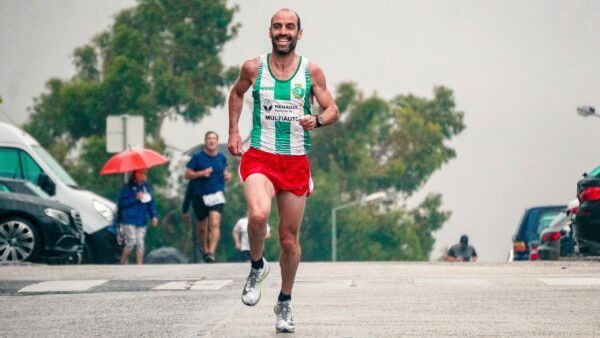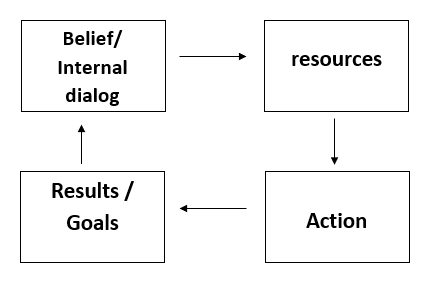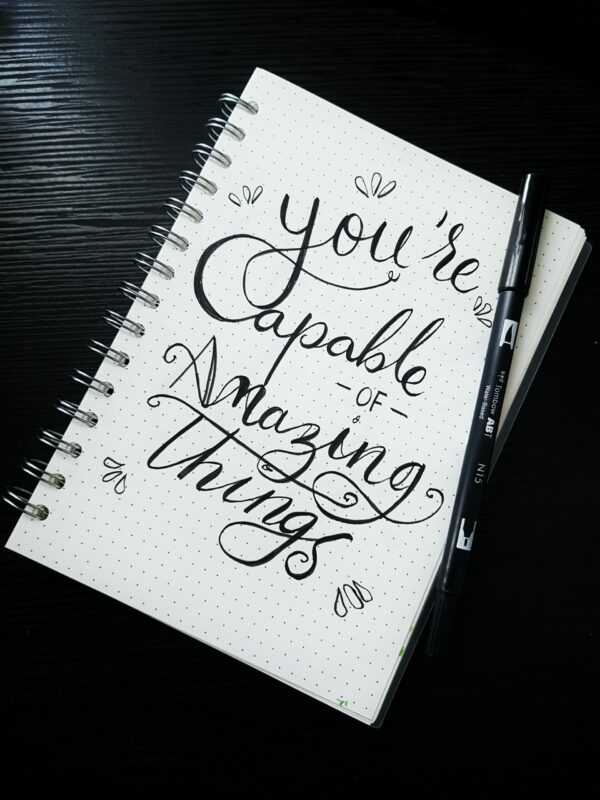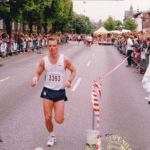The half-marathon has become a popular hit. More and more runners are taking up the challenge to defeat this amazing distance that offers all the best benefits of long-distance running – without requiring quite as much as a full marathon. In Training to complete a half marathon with great motivation, we will explore this.
So even though the Half Marathon as a running distance for many years has been in the shadow of its big brother the marathon, it’s about to break through as also experienced runners’ new dream distance. Many runners today have the half-marathon on the season program because they enjoy that they easily can run the distance with relatively high-intensity several times over a season.

What Is A Half Marathon
A marathon is so demanding that it only can be completed at full intensity 1-3 times a year, while a half-marathon can be completed almost as often as you want, and with high intensity every time. It provides several opportunities for competitions in one year.
The half Marathon is an ideal long-distance
In many ways, a half-marathon is the ideal distance for a race. For new runners, it is far enough to be an appropriate challenge but without being as intimidating as a full marathon and it is far easier to recover from.
For the more experienced runners, it is a good opportunity to test both speed and endurance during a race. A half-marathon is also a good test on the road to a full marathon.
This is probably why this particular distance has become increasingly popular in recent years. The main differences between training for a full marathon and a half-marathon are:
- The amount of training, i.e. The number of kilometers you need to have in your legs is far less for a half-marathon
- You can run the entire distance of 21.1 km several times during training periods
- Problems with hitting the wall or running out of energy are not something you need to worry about on a half-marathon, because the body is able to store enough energy for the entire distance and you can run it at a higher speed
- The tapering period is much shorter up to the half-marathon race
- The recovery time after a half-marathon is also much shorter and easier to get through
Training For a Half Marathon – is About Variety

Now let’s go over to the practical half-marathon training. Training on the same distance and the same route at the same speed every day will not get you in better shape for a half-marathon.
Besides being boring, it will neither challenge the body to develop more resources, skills nor give you new running experiences, because It has been adapted to your one-sided way of running. The keyword here is super-compensation.
The reason is that the body will adapt to a load and if the load is the same every time you run it will not do more! You will only increase the improvement of shape if you expose your body to greater loads than it can handle already. But it’s something that needs to be done with care as it’s of no purpose giving the body more and more loads at once.
How to train for a half marathon – progression
You need to gradually increase the loads and challenge your body to ensure success without injury, illness, or burnout. A rule of thumb is that you must increase your training volume by 5 – 10% per week to experience safe and effective progress.
But it is also the case that if you do not develop/exert yourself, it does not work either. You need to create variety by putting together different types of training that are targeted to the running distance you choose – a half marathon in our case.
You also have to increase your speed, distance, and training frequency as you get in better shape otherwise, your progress will stall and your body will not develop the physiological changes needed to become a better runner. Of course, the development has to be managed in the right way.
Specialization – Train For A Half Marathon
The adjustments your body makes as a result of your training depend on the type of training you are doing. Because the body, only recruits the muscle groups that are challenged and used in specific training. This means that in order to get better at a certain type of activity you need to train that particular activity.
This is why swimmers swim, runners run, dancers dance, etc. Your heart does not know if you are dancing the tango or running. For the heart, both are Cardiovascular training. So, being focused on the specific training you are performing is the best method to develop skills, muscles, tendons, and ligaments as well as neuromuscular patterns.
However, it doesn’t mean that there is no room for anything other than running in your half marathon training, for example, Cross-training will in some cases be a good alternative but the most important part of the training should be running.
Rest and Recovery

When training for a half-marathon, it does not mean that you have to train seven days a week with maximum intensity. If you train that way, you will very quickly drain your body’s resources, and become very tired, sick, or injured.
This is because the body needs rest and recovery to “recharge its batteries”. When the body is at rest, it makes physiological adaptations that the training has stimulated.
Recovery time
Most runners need 48 – 72 hours to recover completely after a hard training session. So, it is not a good idea to push yourself hard too often. If you structure your training by e.g. following a personal half-marathon training program, you can train steadily with progress without overloading yourself.
It will also be a good idea to simply listen to the body and what it tells you. If you wake up in the morning and feel exhausted, stiff, and have pain all over your body while your resting heart rate is higher than normal.
Then you should drop the running training no matter what the program tells you. As one famous running trainer says it, “If you listen to your body’s whispering, you’re not going to hear it screaming.”
Your Half Marathon Shape Cannot be Stored
Your body cannot store energy for later use. In the same way that the body adapts to training, all your achieved results will be lost if you stop the training!
If you achieve a level of training that makes you feel comfortable and choose not to increase your speed, distance, intensity, and number of training sessions in a managed order, your body will not adapt to new challenges – because it’s not necessary!
And you risk it doesn’t undergo the physiological changes, which provide the progress needed to complete your half-marathon project. One study found that just one month without training resulted in a 20% drop in important glycogen stores and your running performance drops by 3-5% after three to four weeks on the couch.
Of course, this does not mean that you never can take a day off from training, which you now know is necessary particular after a hard training session. But it emphasizes the importance of finding the right balance between training and rest.
The FIT Principle in Training
You now know that you need to run and gradually increase the load to challenge the body for improvements as well as put in rest days so the body can make the necessary physiological changes. When you develop your personal training program, there are three key concepts you need to consider.
They are contained in the FIT principle or FIT Formula, which stands for frequency, intensity, and time, i.e. how often, how hard and how long should you run – it’s a kind of regulation of key areas as illustrated below:
| F | Frequency | How often? |
| I | Intensity | How hard? |
| T | Time | How long? |
In basic the composition of these elements will depend on the distance you choose to run as well as the factors you need to consider like your age, your running experience, your health, your shape, your personal goals and the amount of time you have set aside for training.
When running a half-marathon, there are particular three key elements that fill out the main part of the training program:
The long run

To improve endurance, which is essential in a half-marathon, you have to run long and slow distances (LSD). Both the pace and the length of the distance you have to run depend on your basic shape.
In addition to offering great physiological benefits such as increased blood volume, better oxygen uptake from the blood due to more capillaries in the working muscles, improved utilization of fat as a source of combustion, increased calorie consumption, stronger ligaments, tendons, and better muscle endurance, the long runs will also develop willpower and mental attitude.
Lactic acid threshold training
Lactic acid training is fast running at a speed where you are close to your lactic acid threshold or anaerobic limit. It is often not a speed that you will feel comfortable with if you have to talk at the same time. Therefore, this form of training is divided into intervals with rest breaks.
By working at an intensity close to your lactic acid limit, it will gradually move so you will be able to produce energy aerobic at an ever higher working intensity. It also allows your body to get used to training with lactic acid accumulation in the muscles – which improves the tolerance for lactic acid accumulation – and to remove the acid from your muscles more effectively.
The main goal of this training form is that endurance training (the long run) is about being able to run long for a long time. With lactic acid training, you will be able to run faster in the long runs/competitions. The other side benefits of this form of training are a faster cadence, an improved running economy as well as a feeling of greater surplus.
Maximum Oxygen uptake training (VO2 max.)
This is the most demanding training type. VO2 – max. performs as short intervals with > 90 % of max. intensity. So the recovery time is very long afterward.

The maximum amount of oxygen the body can absorb from the air per. min. And use in the muscles, is called the maximum oxygen uptake or VO2-Max. It is largely genetically determined – just like gender, age and weight have an impact – but that does not mean you cannot improve it with regular training, particularly since most of us are far from our genetic potential.
Oxygen uptake VO2 max. is important for a half marathon
VO2 – max. alone is not a good measure of how well you can perform in a long-distance race, although studies show that there is a close correlation between results in marathon running and the percentage of VO2 – max., a runner is able to complete a race with.
A study showed that highly trained runners were able to keep 82% of their VO2 – max. through a full marathon. Other studies claim that we can increase our maximum oxygen uptake by 5 – 25% through training. As a general example, an inactive man has a maximum oxygen uptake of 30 ml/kg/min. while a well-trained man may be close to 70 ml/kg/min.
Training with such high intensity loads the heart and blood circulation to the max., leading to an increase in heart stroke volume. In addition, such training will increase the ability of the muscles to draw oxygen out of the blood.
So, the endurance is significantly improved, and running at such a high pace improves the strength in the legs, you also get used to training with higher heart frequency and on a higher level of exertion.
Great Places For Half Marathon Training

There are no restrictions on where you can run – this is just one of the great benefits of running. You can choose to run in municipal parks, sports fields, nature trails in the countryside, hiking trails, along with the beachside, etc.
Training for a half-marathon is therefore, an excellent opportunity for you to experience your local area and explore areas further away from where you live particularly if you have a car. You can use the internet to map exciting routes and try them out.
It is important with variation in the surface you run on and that you do not always run on a hard surface, as this increases the risk of injuries over time. A managed variation will also make your joints and muscles stronger, as the different surfaces cause the body to recruit different muscle groups, which thereby prevents injuries and makes you more resilient.
Running in Terrain

Much of the joy of running is associated with the ability to forget the often routine going everyday life. So, running in the fresh air out in nature, in the forest or in a beautiful landscape.
It’s definitely more motivating than running in a busy city with many traffic lights that can stop you when you are in a good running rhythm. Studies have shown that on the psychological level you benefit more from training in a natural environment and it is also good for your body.
Another study found that running on uneven terrain burns 26% more calories than running the same distance on an even surface, so if you run regularly on uneven terrain, it will also be significantly easier to run on the even surface.
By running on a softer surface, you also spare your joints from the constant shocks when your feet meet the asphalt or concrete. As mentioned before, a varied surface and uneven terrain is a good challenge for ligaments, tendons, and muscles.
The legendary runner Paula Radcliffe was one of the many runners who trained a lot in uneven terrain to achieve these benefits.
Gravel paths and grass will be ideal compromises when it comes to the pros and cons of running in hilly terrain. Challenging – but without reducing your speed too much. More unstable surface, but not so much that it will give you problems with joints and bones.
But regardless of the surface, do not expect to be able to run at the same speed in terrain as on a flat hard surface. It’s a better solution to run with the same load or heart rate.
Create Your Motivation – You Can Do It

In particular as a beginner on your first half marathon, it’s crucial to maintain your motivation and persistence. So, below I have made a review diagram of how to maintain your motivation and what challenges you may face on the way.
Our inner dialogue is always going on whether you are aware of it or it’s running on autopilot. So, you are always motivated by something and often by many things at the same time. Your motivation for running can easily be there, but often your motivation for something else is just greater.
It could be watching a football game on TV, playing with your kids, washing the car, or something completely different. So in relation to your running goal of completing a half marathon, it’s important that you become aware of how you can use your impact.
Use them in a way, so you are motivated to run and reach your goal of completing a half-marathon and thus live up to your values rather than the opposite and thereby also achieve a positive mental control of your thoughts, get up off the couch and out of the door.
Motivational Thoughts – Diagram
Your thoughts affect you and your results. Therefore, it is important that you become aware of your thoughts. It’s also important to know that the brain cannot clearly distinguish between what you have actually experienced and what you merely have thought. That is the core of mental training.
You create the desired image – and then connect it with positive emotions, thoughts, and images. So, what you imagine and tell yourself in your inner dialogue is going to affect the resources you have available.
Your resources affect your actions and the actions give you a specific result or goal. Both a positive and a negative result will then again affects your internal dialogue /Belief in either one direction or another and the process will run again – as shown in the diagram below developed by super coach Tony Robbins:

Positive expectations utilize a large part of your resources
The important thing to understand here is also that the resources we utilize, the actions we take, and the results/goals we achieve start with belief. So, it will be beneficial to start with positive expectations in order to utilize a larger part of your resources.
Let’s take an example with the diagram: Imagine that your internal dialogue is: “I would like to try running a half-marathon”. When you use the word ‘try’ it’s not really something that gives power to your motivation. So instead of using the word ‘try’, you should change it to:
• “I want to run a half-marathon!” or…
• “I want to run a half-marathon in 2 hours!”
In this way, you will increase your resources take better actions, and have greater chances of achieving your goal and thus strengthen your belief that you will succeed again next time.

The reason why people give up so fast in their projects, in general, is because they tend to look at how far they still have to go, instead of how far they have gotten…!
So, what if you use the diagram above to focus on how far you have gotten, because every time you have completed a training session, you have been through the diagram and have made a little improvement on your way to the half-marathon goal!
The Inhibiting Internal Dialogue
If your inner dialogue becomes negative, it can take a lot of resources from you. If this happens it will hamper the other parameters in the diagram. Your self-confidence and energy level will drop and you increase the risk of giving up when it gets hard or maybe drop out of the program. Typical phrases that can hamper you Are:
- “What if I get an injury?”
- “It’s getting so hard!”
- “I cannot complete it”
- “It doesn’t matter”
All of these phrases rob you of the resources you need. They take your mental and physical energy, which should be used to your working leg muscles, and keep them going even when it gets hard in your training.
The result can therefore very likely be that you underperform or completely refrain from performing at all, and in both cases, you will get tired of yourself, lose self-confidence and have fewer resources for the next time you are in a similar situation, which again hampers the other parameters in the diagram.
The Strengthening Internal Dialogue

The strengthening internal dialogue is words and images that increase your belief that you can do it well and that gives you more of the energy you need. So, while you are standing there tying your running shoes ready to get out of the door – but it’s raining a lot, it is all about giving yourself the optimal resources.
The choice of words here becomes important for how well you get out of the door and through the training session, and sentences that really strengthen can be:
- “I can do this even if it rains”
- “I just have to run for 5-7 minutes then my body is warm and I will feel good”
- “When I have got off to a good start, it doesn’t matter how the weather is, I feel really comfortable”
- “I have an agreement with my running buddies, so I have to show up”
Why you will complete the half marathon program
The more you say it to yourself and get yourself convinced that it’s true the more you will eventually have created the reality that you easily can do it and it will be comfortable.
When you hit the right state because you already have built up your resources through positive experiences over time, you will complete the running program no matter what challenges you may face.
In that way, you build up your belief over and over again and all the parameters in the diagram are strengthened, so that you eventually find it natural to run in all kinds of circumstances, and then it becomes really fun.
The strengthening of internal dialogue is not just words. Positive visualization is like a movie in your head that you can succeed, and similarly, convince your brain that it can easily be done. Strengthening the internal dialogue is thus about convincing yourself that you can do it well.
If your self-confidence is high, then of course you should just use it as a starting point. If your self-confidence is low, you just have to pretend you have it like in ‘fake it until you make it’.
Your Motivational Emotions
Let’s look inward and think about which emotions will affect you to get out running. Your emotions can positively affect your motivation in different ways. Emotions can fill much more than thoughts and therefore really give you energy and drive to get out and do something about it.
They can motivate you because you want to use some of the energy, you have inside and get it out and an easy way to do that is by using your body. They can also motivate you to train if you seek away from the emotions because they are uncomfortable and you know that training can make them go away or at least make you forget them for a while.
Go back to a crucial moment where you have to choose whether you want to train or not. Imagine what emotion makes you make the choice you want to make. The four most important emotions you can have are:
- Anger
- Anxiety
- Sadness
- Joy
Each one of them can make you choose to train, but in different ways and with different gains and consequences.
Anger takes focus
If you are angry, then your energy level rises and you may have the urge to get rid of the energy by training. In addition, you can choose to train to get your thoughts away from what makes you angry and towards something that makes you in a good mood.
The challenge of using anger for long periods of time as motivation for training is that the anger can end up being so dominant that you cannot focus on your training and therefore can get challenges by choosing it.
Anxiety takes joy
If you are afraid of gaining weight, afraid of getting sick, afraid of not getting well with yourself, then it can motivate you to train. The challenge for you will be that it can make you train even if you hate it. It will take the joy away from you and increase the chance that you will stop at some point.
Sadness takes energy
When you are sad it’s good if you can motivate yourself to train. It often helps to train and the training will make you get your energy back. However, the challenge of being motivated to train when you are sad is that the training does not solve the problem or situation that makes you depressed.
Joy makes you desire more
When you do things that make you happy, your brain releases some positive substances. Your brain will naturally try to trigger These pleasure substances again. This means that when you make sure that training is a good experience for you, then your subconscious will begin to equate training with joy.
This will make you seek the training again. So, you can start a positive circle, where training makes you happy, and the joy makes you desire to train again. A really good method to train and complete a half-marathon project will be to use this pattern.
So, it will be a benefit to using the diagram above in a way to optimize “Joy by training makes you desire more training”.
With the joy of running training, you will improve your belief/internal dialog, which will make you open up to-and use more resources that will make you take better actions, which will give you better results and goals, which again improves your belief/internal dialog.
In that way, the good circle will drive you and makes you better and better.
Final Thoughts
No matter what sport you start with, you should remember the three rules of training – moderation, consequence, and rest and do not expect to become an expert after a week. Each sport requires very special skills and it will take some time to acquire them.
Every time you embark on a new activity, you will find that there are as many comfort zone barriers, as you are willing to challenge.
In addition, you will definitely achieve competence plateaus, and it demands patience and practice to move further on. If you think you need support, you can find a role model or a coach who will help you with the challenges you face along the way.
I hope you get something out of this post and if you have any questions about the topic or want to leave your own Personal review, please leave a comment below.
[faq-schema id=”2831″]







Still, not many runners have a true understanding about how to train systematically for a
successful Half Marathon running race. These tips and trick should help motivate and hold you
accountable to accomplishing your goals, whether running a half-marathon or other races:
Why people fail to complete long distance runs?
Most do not realize what the task truly is. You cannot just go 4 times one week and then 7
times the next and expect to average it out in a week.
Hi Dexidoo
Thank you for the comment. You have the point here and in practice it’s about all our goals, that we make our own prioritizing for what is important and often do things systematically even that it’s not easy.
Be Well
Oh, this is a very good one for you to come on to talk about. I really like that you can tell us about this on how we are able to complete a half marathon. It’s is really nice because I have always wanted to run but I lacked the motivation to do it. I think it would be good to start small. Thanks!
Hi Jackie
Thank you for the comment. Happy that you can use some of it, and yes it would be good to start out small, it will make it easier more healthy and you will gradually build up your resources.
Be Well
These tips and tricks that you’ve shared in your article should be able to help any long distance runner in my opinion be able to accomplish whatever limit they have set for themselves and eventually pass it. Marathon running is one of the hardest as it requires a good stamina and perseverance to win.
Hi Sean
Thank you for the comment and your way of interpret the pointe.
Be Well